Articles
- Page Path
- HOME > J Korean Acad Nurs > Volume 50(4); 2020 > Article
- Invited Paper Analysis of Research Topics and Trends in the Journal of Korean Academy of Nursing to Improve Its International Influence
- Soyoung Yu, Jeung-Im Kim, Jin-Hee Park, Sun Joo Jang, Eunyoung E. Suh, Ju-Eun Song, YeoJin Im
-
Journal of Korean Academy of Nursing 2020;50(4):501-512.
DOI: https://doi.org/10.4040/jkan.20167
Published online: August 31, 2020

2School of Nursing, Soonchunhyang University, Cheonan, Korea

3College of Nursing · Research Institute of Nursing Science, Ajou University, Suwon, Korea

4Red-Cross College of Nursing, Chung-Ang University, Seoul, Korea

5College of Nursing · Research Institute of Nursing Science, Seoul National University, Seoul, Korea

6College of Nursing Science · East-West Nursing Research Institute, Kyung Hee University, Seoul, Korea

Abstract
Purpose
The purpose of this study was to analyze articles published in the Journal of the Korean Academy of Nursing (JKAN) between 2010 and 2019, along with those published in three international nursing journals, to improve JKAN’s international reputation.
Methods
The overall characteristics of JKAN’s published papers and keywords, study participants, types of nursing interventions and dependent variables, citations, and cited journals were analyzed. Additionally, the keywords and study designs, publication-related characteristics, journal impact factors (JIF), and Eigenfactor scores of International Journal of Nursing Studies (IJNS), International Nursing Review (INR), Nursing & Health Sciences (NHS), and JKAN were analyzed and compared.
Results
Among the four journals, JKAN’s score was the lowest in both the journal impact factor and Eigenfactor score. In particular, while the JIF of INR and NHS has been continuously increasing; JKAN’s JIF has remained static for almost 10 years. The journals which had cited JKAN and those which JKAN had cited were mainly published in Korean.
Conclusion
JKAN still has a low IF and a low ranking among Social Citation Index (E) journals during the past 10 years, as compared to that of four international journals. To enhance JKAN’s status as an international journal, it is necessary to consider publishing it in English and to continuously improve the conditions of other publications.
Published online Aug 31, 2020.
https://doi.org/10.4040/jkan.20167
Analysis of Research Topics and Trends in the Journal of Korean Academy of Nursing to Improve Its International Influence
Abstract
Purpose
The purpose of this study was to analyze articles published in the Journal of the Korean Academy of Nursing (JKAN) between 2010 and 2019, along with those published in three international nursing journals, to improve JKAN's international reputation.
Methods
The overall characteristics of JKAN's published papers and keywords, study participants, types of nursing interventions and dependent variables, citations, and cited journals were analyzed. Additionally, the keywords and study designs, publication-related characteristics, journal impact factors (JIF), and Eigenfactor scores of International Journal of Nursing Studies (IJNS), International Nursing Review (INR), Nursing & Health Sciences (NHS), and JKAN were analyzed and compared.
Results
Among the four journals, JKAN's score was the lowest in both the journal impact factor and Eigenfactor score. In particular, while the JIF of INR and NHS has been continuously increasing; JKAN's JIF has remained static for almost 10 years. The journals which had cited JKAN and those which JKAN had cited were mainly published in Korean.
Conclusion
JKAN still has a low IF and a low ranking among Social Citation Index (E) journals during the past 10 years, as compared to that of four international journals. To enhance JKAN's status as an international journal, it is necessary to consider publishing it in English and to continuously improve the conditions of other publications.
INTRODUCTION
Nursing science research in Korea officially began with the publication of the Journal of Nurses Academic Society (JNAS)—Korea's first nursing journal—subsequently renamed as the Journal of Korean Academy of Nursing (JKAN). It was the official journal of the Korean Academy of Nursing which was established in 1970, and in 2005, renamed the Korean Society of Nursing Science (KSNS). In 2001, JKAN was listed on the Korea Citation Index, and on Medline and Scopus in 2004. As part of the continued efforts to develop JKAN as a competitive nursing journal, its Korean title was restated in English beginning with the October 2008 issue, and in the same year it was listed on both the Social Science Citation Index (SSCI) and Science Citation Index Expanded (SCIE) journal lists [1].
Research accumulates new knowledge and verifies existing knowledge and based on the creation and accumulation of such relevant academic knowledge, studies are developed and conducted. The creation and accumulation of knowledge in nursing is accomplished through research that reflects the uniqueness of nursing [2]. Research is essential to develop, refine, and expand nursing professionals' basic scientific knowledge. This is achieved through a continuous process of feedback in the field of research-theory-practice, and by developing new theories and methodologies required for the expansion and development of this study area [3]. Thus, it is necessary to analyze the accumulated research trends as well as the future direction of the development of research and knowledge, based on the results of the analysis [4]. In addition, as nursing science is a study targeting humans based on practicalities; it is crucial to establish a knowledge-based system of nursing through research and practice [1, 5].
Korea's nursing research trends can be established through papers published in JKAN. These trends were identified and analyzed through articles published right from: its first issue up to 1999 [6]; 2004~2006 [7]; 2007~2008 [3]; and the first issue to 2010 [8]. However, this analysis had limitations since it only targeted articles in JKAN, whereas for grasping the global trends in nursing research, it was necessary to compare and analyze papers published in international nursing science journals having the highest citation index in the field, and thereafter, discuss further improvements to be made. This will also be a good opportunity to explore the academic development of nursing as a science by applying and developing useful knowledge in practice and theory, as well as for JKAN to become a high-profile journal both domestically and internationally through its qualitative growth.
Therefore, this study analyzed research papers published in JKAN during the last decade according to their research methodologies, as well as compared and analyzed papers registered in: the internationally recognized International Journal of Nursing Studies (IJNS); the International Council of Nurses (ICN)'s official journal, the International Nursing Review (INR); and Japan's leading nursing journal, Nursing & Health Sciences (NHS). Such analysis will help to figure out why JKAN'S impact factor (IF) is about 0.5. Furthermore, it will generate suggestions on the strategies and development directions for improving JKAN's IF as well as propose a possible direction for nursing research in Korea.
METHODS
1. Study design
It was a descriptive study for analyzing articles published in JKAN from 2010~2019 and articles in IJNS, INR, and NHS during 2015~2019.
2. Data collection
This study's data were comprised of papers published from 2010~2019 in JKAN, and papers published in three other journals from 2015~2019 by searching PubMed. Specifically, the following data were collected for analysis.
1) Annual characteristics such as the number of papers, English papers, overseas authors, published in JKAN from 2010~2019
2) Keywords; study participants; types of nursing interventions and dependent variables; citing and cited journals in JKAN papers from 2010~2019
3) Publication characteristics of IJNS, INR, NHS, and JKAN
4) Journal Imfact Factor (JIF) and Eigenfactor scores of IJNS, INR, NHS and JKAN from 2010~2019
5) Keywords and study design of papers in IJNS, INR, NHS, and JKAN from 2015~2019
3. Journal evaluation indicator
This study's aim was to evaluate the following two indices as journal evaluation indicators from 2010~2019.
1) Journal Impact Factor
JIF is the basis upon which Eugene Garfield proposed the development of a citation index in 1955, and has since been used as a way to measure the reliability and importance of journals [9]. Articles that generate the maximum citations generally appear to be important or influential. Previous studies have shown that when choosing a journal to submit a paper, researchers accord the highest priority to JIF, from among the various indicators [10]. The publication time span used to calculate each year's JIF score is the preceding two calendar years. Thus, the calculated score for a journal in 2018 would include citations to articles published in 2016 and 2017 [9].
2) Eigenfactor score
Eigenfactor score was introduced by the Journal Citation Reports (JCR) in 2007 to assess the journal's total impact. It also measures the number of times articles from the journal published in the past five years have been cited in the JCR year. However, unlike the IF, the eigenfactor score counts citations to journals in both the sciences and social sciences, and eliminates self-citations; as well as discounts every reference from one article in a journal to another article from the same journal. It is scaled so that the sum of the eigenfactor score of all journals listed in Thomson's JCR is 100 [11, 12]. When calculating the eigenfactor score, highly cited journal quotes have a higher weight than those of lesser cited journals [13]. This score—a new bibliometric indicator—ranks the journals by a similar algorithm as the Google's Page Rank, and reflects not only the number of citations but also the citation source's prestige [14, 15].
4. Data analysis
1) The annual characteristic, such as the number of papers, English papers, and overseas authors, published in JKAN during 2010~2019 were analyzed using frequency and percentage. The top 10 keywords per year were extracted according to their frequency, and the points of change in major words were also checked for the existence of annual differences and to determine which keywords constantly appeared.
2) JIF, eigenfactor score, citing, and cited journal indexes of IJNS, INR, NHS, and JKAN were confirmed through the Web of Science index.
3) Keyword analysis of the papers in IJNS, INR, NHS, and JKAN from 2015~2019 were visualized as a Word Cloud through the word cloud generator (http://wordcloud.kr/), and the study design was analyzed with frequency and percentage.
5. Ethical considerations
We were informed that this research was not subject to review because study subject is not human subjects.
RESULTS
1. Descriptive characteristics of JKAN
1) The annual publication status of JKAN
Author characteristics, study design, participants, data collection methods, types of nursing interventions, and dependent variables during 2010~2019 are listed in Table 1.
Table 1
The Annual Publication Status of JKAN
JKAN published a total of 809 papers from 2010~2019, with 111 and 60 papers in 2012 and 2018, respectively. The main publishing language was Korean, and for 10 years, the total number of English papers was 75 (9.3%), which was less than even 10%. With regard to the number of co-authors, 447 (55.3%) papers had two authors, 35 included some foreign authors, and 7 (0.9%) had only foreign authors. In addition, the first authors comprised university professors in 647 (80.0%) of the published papers. The details of the research design, participants, types of nursing interventions, and dependent variables (2010~2019) are presented in Appendix 1. While various research designs were applied, the most common were non-experimental studies comprising 317 surveys. The highest number of research participants were middle-aged in both healthy and patients and 163 studies were conducted on healthcare providers. Health education was the most common type of nursing intervention with 108 cases, and the types of dependent variables such as knowledge, attitude, and behavioral outcomes had 113 cases.
2) JKAN's top 10 keywords during 2010~2019
JKAN usually presents three or more keywords for each paper. Table 2 comprises the top 10 keywords in frequency order from 2010~2019. The keywords “Depression,” “Qualitative Research,” “Quality of life,” “Aged,” and “Stress” were ranked at the top of each year and the main keywords were similar for 10 years.
Table 2
Keywords Top 10 in 2010~2019 of JKAN
2. Comparison of JKAN, IJNS, INR, and NHS
1) Publication characteristics of IJNS, INR, NHS, and JKAN
Table 3 shows a comparison of the publication characteristics of IJNS, INR, NHS, and JKAN. While the countries differ in all the four journals; except for JKAN, the other journals were in English. JKAN's chief editor's term of office was limited to two years, but the other three journals had no such restrictions. Additionally, there were differences in the composition of editors of at least eight countries. In terms of publishing companies, Elsevier was identified as IJNS's publisher and Wiley as the publisher for INR and NHS. The 2018 ISI JCR was ranked 1st, 38th, and 57th by IJNS, INR, and NHS, respectively, and JKAN was ranked 116th among 120 journals, in 2019.
Table 3
Publication Characteristics of IJNS, INR, NHS and JKAN
2) Changes in key indicators of journals during 2010~2019
Figure 1 shows the last 10 years' JIF and eigenfactor score trends in the IJNS, INR, and NHS, as well as in JKAN. As compared to the other three journals, JKAN's score was the lowest in both the JIF and eigenfactor score. In particular, while the JIF scores of INR and NHS have kept increasing, that of JKAN has remained static for almost 10 years.
Figure 1
Changes in key indicators of four journals during 2010~2019.
IJNS = International Journal of Nursing Studies; INR = International Nursing Review; NHS = Nursing and Health Science; JKAN = Journal of Korean Academy of Nursing.
3) Journal relationships: citing and cited journals of JKAN
Figure 2A shows an analysis of the journals that cited articles in JKAN during the last decade, as reported in the Web of Science (https://mjl.clarive.com/journal-
Figure 2A
Citing journals of JKAN papers (N = 1203).
Figure 2B shows the results of the top 20 journals analyzed from among JKAN's “cited” journals during the last decade, as reported in the Web of Science (https://mjl.clarive.com/journal-
Figure 2B
Cited journals of JKAN.
4) Keyword analysis of published articles (2015~2019)
Figure 3 represents word clouds with 50 keywords from among the keywords of the articles published in four journals during 2015~2019. The word clouds presented using the word cloud generator, (http://wordcloud.kr/), and JKAN identified words/phrases such as the “Quality of life,” ”Depression,” and “Qualitative Research” as the main keywords. However, in the case of IJNS, keywords such as “Qualitative Research,” “Systematic Review,” and “Dementia” were found to be large, and many related studies were also found. Conversely, INR had relatively large keywords such as “Nursing Education,” “Job Satisfaction,” and “Nursing Students,” and in NHS, the keywords comprised the authors' countries such as “Korea,” “China,” and “Japan,” that mainly reflected the authors of Asian countries.
Figure 3
Word cloud of keywords of four journals during 2015~2019.
IJNS = International Journal of Nursing Studies; INR = International Nursing Review; NHS = Nursing and Health Science; JKAN = Journal of Korean Academy of Nursing.
5) Study design of the published articles (2015~2019)
The changes in the proportion of quantitative research in four journals during the preceding five years were as follows: the average rate of change in JKAN and IJNS was not large at 82.9% and 87.8%, respectively; while that of INR ranged from 55.2~82.4% and NHS from 58.5~81.7%, confirming a relatively large change. Among the experimental studies, JKAN had the highest rate (28.7%), followed by IJNS, NHS, and INR at 13.5%, 12.8%, and 6.0%, respectively. The randomized controlled trials (RCT) rates for IJNS, JKAN, NHS, and INR were 11.8%, 6.2%, 6.1%, and 0.4%, respectively. JKAN had the lowest rate of qualitative research with an average of 9.2%, followed by IJNS, INR, and NHS at 10.7%, 18.4%, and 29.1%, respectively. The proportion of systematic review papers published for five years was the highest with IJNS at 25.9%, followed by INR's 7.4%, JKAN's 2.7%, and NHS's 2.0% (Table 4).
Table 4
Study Design of Published Articles of Four Journals in 2015~2019
DISCUSSION
Academic research can be intense, stimulating, and rewarding. A part of the research process includes writing a paper and submitting it to a journal [16]. When choosing a journal, scientists often refer to the JCR ratings to prioritize well-regarded journals. Mainstream scientific journals, including nursing journals, have a social mission to meet quality standards, thus, they should be evaluated using scientific measurement tools [15]. Since such evaluations are important to both academia and funding institutions; it was pertinent to check the status of JKAN—the official journal of the KSNS—which is celebrating its 50th anniversary as an international nursing journal. With this in mind, we compared JKAN with three eminent journals and discussed the findings as well as future developments.
First, we found that the proportion of English-written papers was less than 10% and non-Korean authors were below 1%, ever since JKAN had been indexed in SCI (E). This can be viewed as an obstacle to competing with similar journals having worldwide audiences. The proportion of English-written papers should, therefore, be gradually increased with a view to eventually transforming JKAN into an international journal within a few years. This process would include, but not be limited to, recruiting full-time editors and authors who are more representative of an international audience. In terms of citations, JKAN's rating was the lowest among the four journals featured. The reason for the low number of citations probably stemmed from the fact that most of papers were in Korean, which made it difficult for non-Koreans to access them. INR, one of the journals featured in the comparison, also published in Spanish since its members included nurses and researchers from many countries. Moreover, journals and papers having country names in their titles, abstracts, or keywords systematically receive fewer citations, and are published in journals with lower IF as compared to those which do not include country names in the same fields [17]. Therefore, corrections should be made to exclude the word ‘Korean’ from JKAN's title.
Second, we are of the opinion that since this was a professional rather than a scientific research, most of the papers did not provide new nursing knowledge. The number of articles published annually ranged from a minimum of 60 to a maximum of 111. In addition, an evaluation of the effects was required since many of the studies targeted a middle-aged population and most of the applied nursing interventions included health education. The most distinctive point was that the main keywords of the articles in JKAN had hardly changed over the last decade. Since the keywords presented by authors represent the words in their articles, it is a matter of concern that there have been no significant changes in the annual order of frequency of the top 10 keywords for 10 years. Thus, it is necessary to retrospect on whether research is being repeatedly conducted on the same topics or whether JKAN was disinclined toward accepting new research topics. This should not be overlooked since it forms part of our efforts as nursing scientists to continually publish interesting and upgraded articles. The comparison of keywords in Figure 3 showed that more diverse keywords were presented in IJNS and INR than in JKAN.
Third, a comparison of the four journals revealed significant differences in the trends of study design and main keywords over five years. Although these findings may be the result of each journal having its own unique characteristics and goals; it is still worthwhile to note the differences in research trends. In the case of IJNS, the first ranked journal, the proportion of systematic review with meta-analysis research was six times that of JKAN's. This proportion has gradually increased over the past five years which suggests that the systematic review and meta- analysis research publication rates have also increased, especially since such research is at the top of the hierarchy of evidence. Another prominent difference was JKAN's being five times stronger than other well-regarded international journals in terms of the design ratio of experimental studies. JKAN also had the highest proportion of experimental studies. Most of IJNS's experimental studies being RCTs was a feature that distinguished it from other journals; particularly since RCTs are the hallmark of evidence-based nursing and form the basis for translating research data into clinical practice. JKAN, therefore, has to find a way to encourage researchers to conduct RCTs with rigorous experimental design.
The fourth issue to be considered is self-citation. According to the Web of Science data, JKAN's self-citation rate was the highest among the four journals. Self-citations constitute a significant portion of the citations which JKAN gives and receives each year. A journal's eigenfactor score can be considered a reflection of its importance to the scientific community. The eigenfactor score calculation is based on the number of times articles from the journal published in the past five years have been cited in the JCR year, but it also considers which journals have contributed these citations so that highly cited journals will influence the network more than lesser cited ones. References from one article in a journal to another article from the same journal are removed, so that the eigenfactor score is not influenced by journal self-citation [11, 12]. Therefore, the self-citation rate should be reduced to improve JKAN's journal influence and eigenfactor score.
Finally, there are problems with the appointment of editors in JKAN. While the editors-in-chief of IJNS, INR, and NHS, are appointed in a professional, full-time capacity with no limits to their term of office; JKAN replaces its editor-in-chief every two years, which can be an obstacle to the maintenance and development of academic journal expertise. The three journals also differ from JKAN in that their editorial committees are composed of professors from at least eight countries, and their journals as well as citation indexes are managed by big publishers. Elsevier manages IJNS, while Wiley manages INR and NHS.
Based on an evaluation of 120 nursing journals' citation indexes, JKAN 116th ranked in 2019. While there could be several reasons for JKAN's citation index being so very low, one can assume it is because more than 90% of the journals are Korean- language papers rather than English-language ones. In particular, the fact that even NHS which publishes six times a year in English, has a higher citation index than JKAN, clearly shows the direction in which JKAN should publish in English in the future.
CONCLUSION
This study aims to suggest a plan for enhancing JKAN's reputation based on an analysis of three eminent international journals. Related journals are indispensable elements in the process of developing a single academic field, and this is applicable to nursing, especially in the case of JKAN, which is a leading Korean nursing journal. However, it is difficult to say that JKAN has developed over a period of more than 10 years since 2008, when it was indexed in the SSCI and SCIE. This fact reveals the existence of problems compared to other international journals, i.e., low IF and low ranking among 120 SCI (E) journals.
To improve JKAN's IF, we—editors—suggest the following: Publishing it in English and providing an academic environment that would attract research papers rather than just a lot of professional papers, for enthusiastic development in nursing knowledge. It is also imperative to change JKAN's title from the name of a specific country to a general name.
In 2020, JKAN stands at the turning point of the 50th anniversary of its founding. With in-depth reflection, the influence and quality of JKAN may find an outstanding place in the next decade.
CONFLICTS OF INTEREST:The authors declared no conflict of interest.
AUTHOR CONTRIBUTIONS:
Conceptualization or/and Methodology: Yu S & Kim JI & Park JH & Jang SJ & Suh EE & Song JE & Im YJ.
Data curation or/and Analysis: Yu S & Kim JI & Park JH & Jang SJ.
Funding acquisition: None.
Investigation: Park JH & Jang SJ & Suh EE & Song JE & Im YJ.
Project administration or/and Supervision: Yu S & Kim JI.
Resources or/and Software: None.
Validation: Yu S & Kim JI & Park JH & Jang SJ & Suh EE & Song JE & Im YJ.
Visualization: Yu S & Kim JI & Park JH & Jang SJ.
Writing original draft or/and Review & editing: Yu S & Kim JI & Park JH & Jang SJ.
ACKNOWLEDGEMENTS
We celebrate the 50th anniversary of KSNS together with researchers across the world. It is an honor to be authors and members of JKAN's editorial board. We are grateful for the support provided by KSNS, Heejoo Kim and Medrang.
Appendix 1
The Annual Publications Characteristics of JKAN (2010~2019)
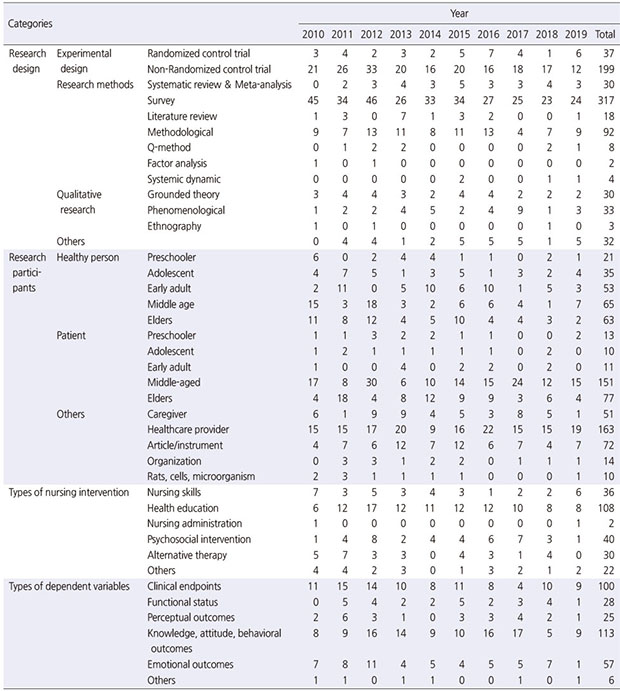
References
-
Shin HS, Hyun MS, Ku MO, Cho MO, Kim SY, Jeong JS, et al. Analysis of research papers published in the Journal of the Korean Academy of Nursing-focused on research trends, intervention studies, and level of evidence in the research. Journal of Korean Academy of Nursing 2010;40(1):139–149. [doi: 10.4040/jkan.2010.40.1.139]
-
-
Choi KS, Song MS, Hwang AR, Kim KH, Chung MS, Shin SR, et al. The trends of nursing research in the Journal of the Korean Academy of Nursing. Journal of Korean Academy of Nursing 2000;30(5):1207–1218. [doi: 10.4040/jkan.2000.30.5.1207]
-
-
Choe MA, Kim NC, Kim KM, Kim SJ, Park KS, Byeon YS, et al. Trends in nursing research in Korea: Research trends for studies published from the inaugural issue to 2010 in the Journal of Korean Academy of Nursing and the journals published by member societies under Korean Academy of Nursing Science. Journal of Korean Academy of Nursing 2014;44(5):484–494. [doi: 10.4040/jkan.2014.44.5.484]
-
-
Nestor MS, Fischer D, Arnold D, Berman B, Del Rosso JQ. Rethinking the journal impact factor and publishing in the digital age. Journal of Clinical and Aesthetic Dermatology 2020;13(1):12–17.
-
-
Gaston TE, Ounsworth F, Senders T, Ritchie S, Jones E. Factors affecting journal submission numbers: Impact factor and peer review reputation. Learned Publishing 2020;33(2):154–162. [doi: 10.1002/leap.1285]
-
-
Bergstrom C. Eigenfactor: Measuring the value and prestige of scholarly journals. College & Research Libraries News 2007;68(5):314–316. [doi: 10.5860/crln.68.5.7804]
-
-
Moed HF. Measuring contextual citation impact of scientific journals. Journal of Informetrics 2010;4(3):265–277. [doi: 10.1016/j.joi.2010.01.002]
-
-
Liu XZ, Fang H. A comparison among citation-based journal indicators and their relative changes with time. Journal of Informetrics 2020;14(1):101007 [doi: 10.1016/j.joi.2020.101007]
-
-
Cantín M, Muñoz M, Roa I. Comparison between impact factor, eigenfactor score, and SCImago journal rank indicator in anatomy and morphology journals. International Journal of Morphology 2015;33(3):1183–1188. [doi: 10.4067/S0717-95022015000300060]
-
-
Peterson K. Guide to life science careers [Internet]. Cambridge: NPG Education; c2014 [cited 2020 Jul 2].Available from: https://www.nature.com/scitable/ebooks/guide-
to- life- science- careers- 14053951/.
-
 KSNS
KSNS
 E-SUBMISSION
E-SUBMISSION
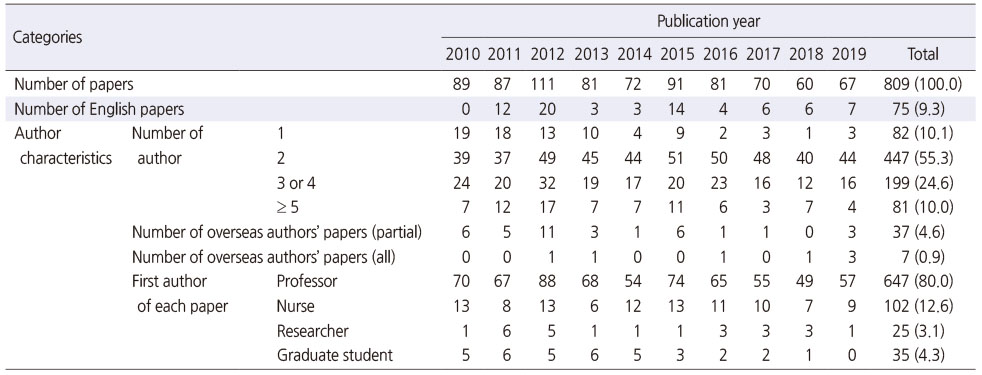
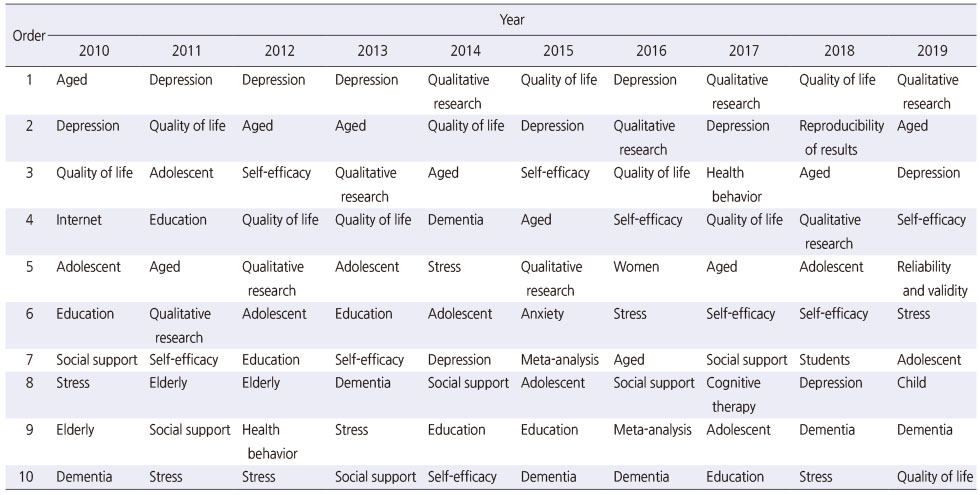
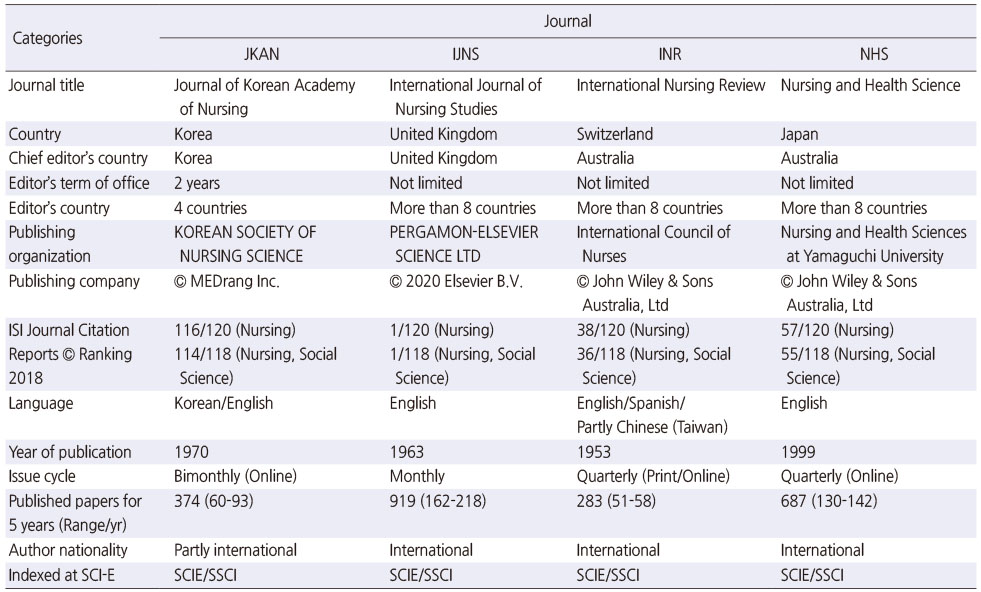
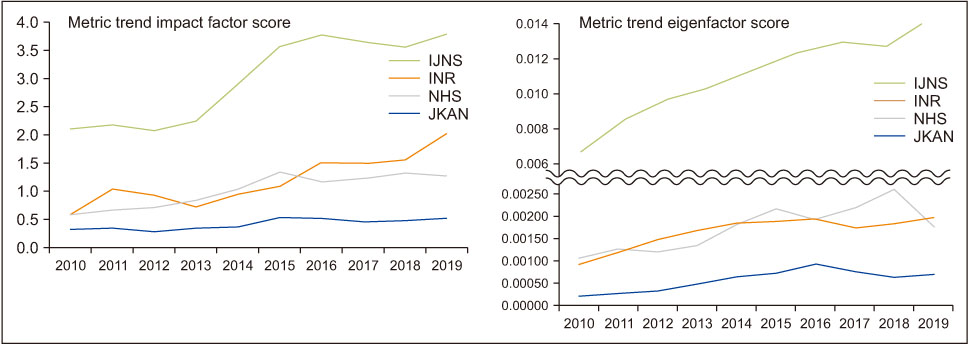
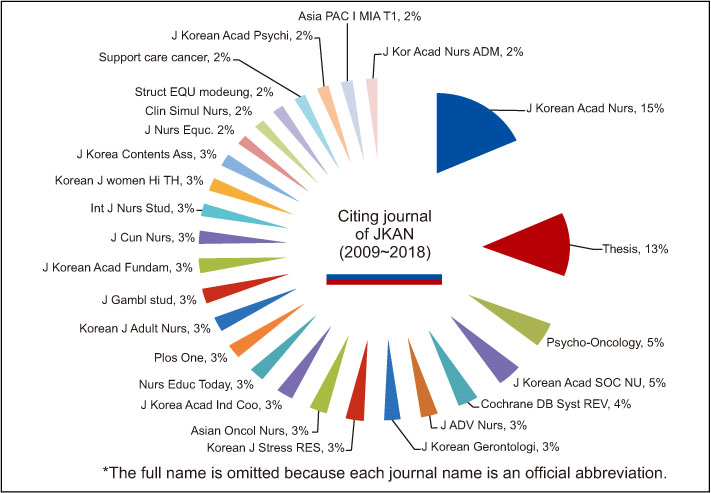
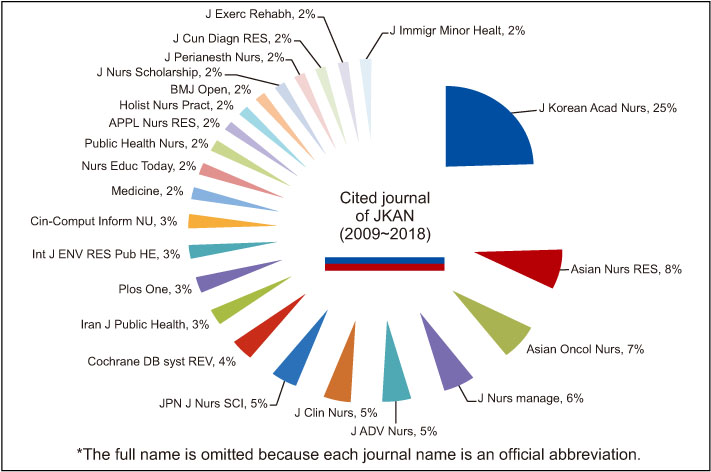
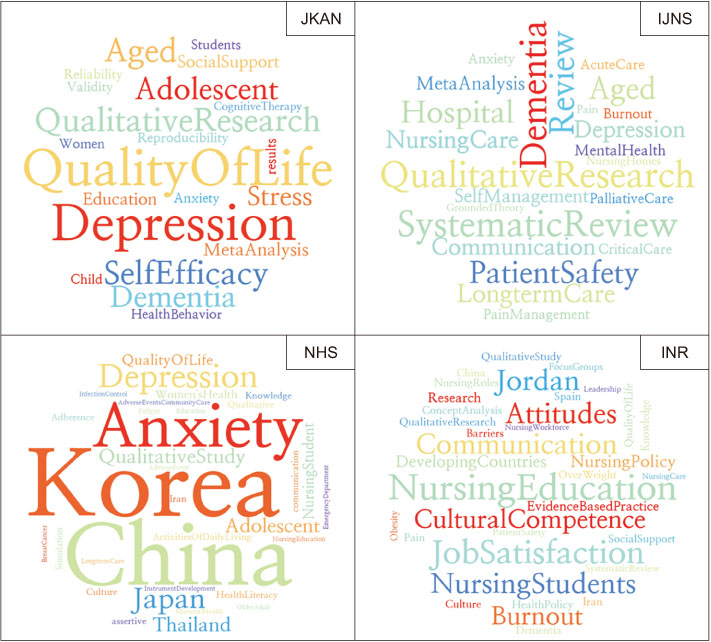
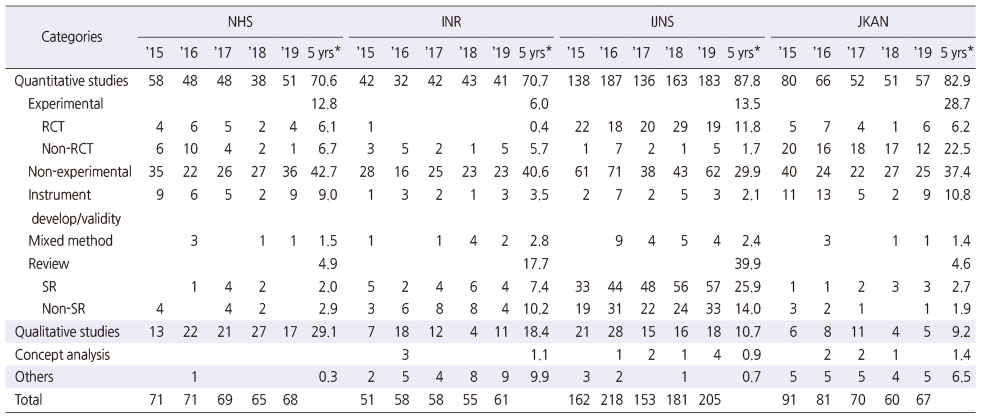

 Cite
Cite

